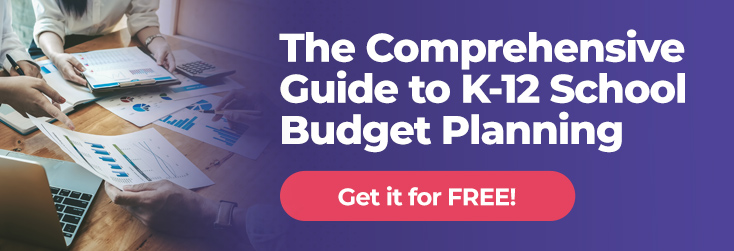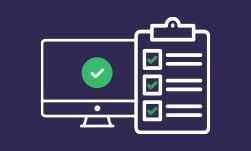
Schools around the world face the challenge of managing expenses while still providing a high-quality education to their students. That challenge reaches a new level for private schools, which must constantly seek new, innovative ways to cover short-term and long-term expenses without the help of government funding.
Whether you're an administrator, board member, alumni or educator, join us as we explore actionable tips you can use to create an effective private school budget that will lead to a financially resilient future.
Table of Contents
- The Importance of Budget Management in Private Schools
- Understanding Your School's Financial Health
- Crafting a Budget That Works
- Leveraging Technology for Financial Efficiency
- Creative and Effective Ways to Boost Your School's Finances
- Key Takeaways
- FAQs
The Importance of Budget Management in Private Schools
Unlike public schools, private schools do not receive funding from the federal, state or local governments. This makes effective budget management an even higher priority in private schools than it is in most public schools. Both types of schools deal with all kinds of operating costs, from administrative expenses to educational expenses. However, without the additional funding that public school districts receive from the government, K-12 private schools must craft strategic annual fund budgets and find creative ways to gather funding.
Delivering a quality education to students while also juggling the litany of tasks required to efficiently manage your school’s finances is a big ask, even for schools with abundant staffing. Trusting a portion of your financial management to a tried-and-true online payment solution like Vanco can be a great way to ease the pressure on your staff and take away some of the hassle that comes with financial planning.
Understanding Your School's Financial Health
Long-term financial sustainability hinges on a deep understanding of your school’s overall financial health. Take time to regularly assess both operating expenses and sources of income so you and your staff can make informed budget decisions.
Sources of Revenue for Private Schools
Private schools depend on a number of different revenue sources to cover operating expenses. For most people, the source that probably comes to mind first is tuition revenue, or the annual fee parents provide in return for their children’s education. Tuition often goes to the underlying essentials of private school spending like daily operations, faculty salaries and facility maintenance, but a portion of the income can be set aside for contingency budgets too.
Private schools must carefully balance the cost of tuition to arrive at a fee that is accessible for families while still generating enough revenue to cover costs. Offering private school scholarships and other forms of financial aid can increase accessibility, but a financial aid budget must then be considered as well in the area of private school billing.
Donations are an important source of non-tuition revenue for many private school budgets. Alumni, community members and supportive parents can make contributions through fundraising efforts organized by the school or the student population. Depending on the nature of the fundraiser, contributions may be dedicated to different portions of the school’s operating budget, such as educational programs, infrastructure and extracurricular activities.
When it comes to long-term financial stability, endowments and grants are perhaps the most essential vehicles for revenue collection.
- Endowments are funds that are typically invested. The returns generated from those investments are then used to support private school programs’ ongoing operations, scholarships and more. Donors, often alumni or philanthropists, contribute to endowments with the understanding that their funds will be invested to generate income in perpetuity. The management of endowments requires careful financial planning to balance sustainability while still covering average pupil expenditure.
- Grants are financial awards provided by various entities, such as government agencies, foundations, corporations or nonprofit organizations. They can be used to support specific projects, programs or the overall operations of the school and do not need to be repaid, making them a valuable source of long-term funding. Private schools can apply for grants to supplement their revenue, expand educational offerings or undertake projects that align with the grantor's objectives, for example, making technology upgrades. It’s important to note that securing grants usually requires a competitive application process and a clear demonstration of how the funds will be used to achieve specific goals.
Operating Expenses in Private Schools
To provide a high-quality education, private schools have to do more than merely cover their daily operating expenses. They must properly invest in their schools, allocating enough resources in each area for staff to do their jobs well and for students to enjoy an enriched educational experience.
A significant portion of private school budgets must be dedicated to teacher salaries and benefits. Schools that want to uphold high academic standards must attract and retain quality educators who align with the mission of the institution. Competitive compensation packages that include salaries, health insurance and retirement benefits are necessary investments for schools looking to attract dedicated and experienced teaching staff who can foster a positive learning environment.
Classroom materials and supplies are another important piece of that learning environment. Schools must be equipped to cover the costs of textbooks, educational materials, digital resources and other supplies needed for classroom instruction. In addition, the continuous advancement of teaching methods and technologies often require that schools set aside additional funds for updated materials, ensuring that students have access to the most current educational resources.
A private school campus must be safe, functional and aesthetically pleasing enough to attract the attention of new prospective students and their parents. Schools should prepare contingency budgets for common expenses like routine maintenance, repairs and upgrades to educational facilities (classrooms, libraries, laboratories, recreational areas, etc.). Part of the budget should also be dedicated to the cost of utilities (electricity, water, heating and cooling) that are necessary for the well-being of both students and staff.
Crafting a Private School Budget That Works
Creating a private school budget tailor-made for your institution is no easy task. It requires careful planning, collaboration across the board and a staunch commitment to financial transparency. But, when crafted correctly, your budget can act as a long-term guide for sorting income sources in a way that best suits the educational mission of your school.
Steps for Creating a Realistic and Flexible Budget
Use these six steps to construct a realistic and flexible school budget:
- Assess historical data and trends. Evaluate enrollment patterns, tuition revenue and past expenses to gain a better understanding of your school’s financial history and better predict future financial challenges.
- Involve stakeholders. Bring in administrators, teachers, parents, board members and other staff or community members who can contribute diverse perspectives about the school’s financial needs.
- Define objectives and priorities. Determine the most important areas that require financial investment for your school. Examples may include faculty development, technology upgrades, facility improvements and more.
- Sort income and expenses. Clearly define sources of income and potential expenses that can be monitored and used to predict revenue changes.
- Build in flexibility. Unexpected circumstances often arise in educational environments, so be sure to include enough contingency funds to cover potential shifts in revenue.
- Monitor and adjust. Maintaining your school budget is an ongoing process. Regularly review financial performance against your budget and identify areas of success while addressing any discrepancies.

Leveraging Technology for Financial Efficiency
Financial management software and tuition payment software are a worthy investment for any school looking to maximize financial efficiency. Online payment solutions, for example, enable schools to collect funds anywhere, anytime. Whether you’re hosting an event that requires ticketing, collecting tuition and meal payments or managing classes and after-school programs, Vanco’s financial management solutions help your staff streamline their work and create a seamless educational experience for members of the school community.
Julie Murphy, Athletic Director of St. Cloud Cathedral High School, recommends Vanco as an essential post-pandemic resource for school events. With Vanco’s assistance, St. Cloud Cathedral High School achieved their first-ever sold-out event in 27 years and drew in an astounding $16,000 in just one event! Our online ticketing solutions can help your school take the hassle out of school event management.
Vanco has been lending a hand to schools for three decades. Our financial management solutions have backed up thousands of districts and educators throughout the years, and we can’t wait to find out how we can be of service to you too.
Creative and Effective Ways to Boost Your School's Finances
Crafting the best school budget requires a mix of strategic thinking and creative solutions. Here are a few unique ways to bring an extra boost of revenue to your school’s finances.
- Partner with local businesses. Work with local businesses to establish joint projects that benefit the surrounding community. Businesses may also be interested in sponsoring school events or advertising in school publications.
- Host engaging school events. Establish fun seasonal fundraising events that bring together students, parents and the entire community. Examples include family movie nights, ice cream socials, Secret Santa and more.
- Develop alumni engagement programs. Encourage former students to support your school’s community through mentorship programs and dedicated alumni fundraising events.
Key Takeaways
Financial planning requires more than just careful spending. To craft truly effective budgets, private schools must navigate a complex interplay of revenue streams and operational costs. However, technology solutions have emerged as a valuable resource for private educators. Financial management software and online payment solutions allow private schools to take the hassle out of collecting funds, enabling staff to streamline their work and focus more attention on what really matters: providing the highest quality education for their students.
Check out Vanco’s all-in-one, secure school payment hub and other online financial solutions to learn more about how technology empowers better financial management.

FAQs
How can alumni and community involvement contribute to a private school's financial stability?
Both alumni and the local community can contribute to private school budgets via donations and fundraising events. Alumni are uniquely positioned to support schools in other ways as well, such as contributing to endowments, volunteering and advocating for sponsorships or facilitating partnerships with local businesses.
What are effective strategies for managing financial aid and scholarship programs in private schools?
Effective management of financial aid and scholarship programs requires planning and transparency. Schools must establish clear criteria for eligibility and a systematic application process. Clearly communicate guidelines to make sure programs reach qualified students and families. To optimize further funds, it may be helpful to consider using a tiered approach that provides varying levels of support based on financial need. Remember to periodically assess these programs’ impacts on student enrollment and diversity.
What long-term cost savings can be achieved by investing in educational technology?
Digital resources and e-books often turn out to be more cost-effective in the long run compared to traditional classroom materials like textbooks and paper. Better technology also enables remote learning, which cuts down on facility costs and increases accessibility to a wider range of students. Technology-enhanced learning can increase student engagement and retention as well, positively impacting financial stability through sustained enrollment.
What approaches can private schools take to balance maintaining high educational quality with cost-efficient operations?
Using technology like financial management software is a great way to cut down operational costs and streamline work for both educational and administrative staff members. Schools may also partner with other institutions to share resources such as facilities or specialized staff. Most importantly, school stakeholders should regularly meet and weigh educational priorities against budget concerns to make sure the school continues to strike a balance between its educational and financial goals.
What measures can private schools take to future-proof their finances against unforeseen challenges?
Private schools should regularly assess and diversify their income sources by exploring alternative revenue streams beyond tuition fees, such as grants, donations and partnerships. They can also set aside contingency funds specifically dedicated to covering unforeseen expenses. Engaging with the local community and establishing strong relationships with parents and alumni can help schools weather difficult times as well.
Imagine Your School's Budget, Only Better: Get Our Free Template Today!
Picture a future where budget woes are a thing of the past. That future starts with our free template, designed just for schools like yours. Grab your copy now and change your financial story!















